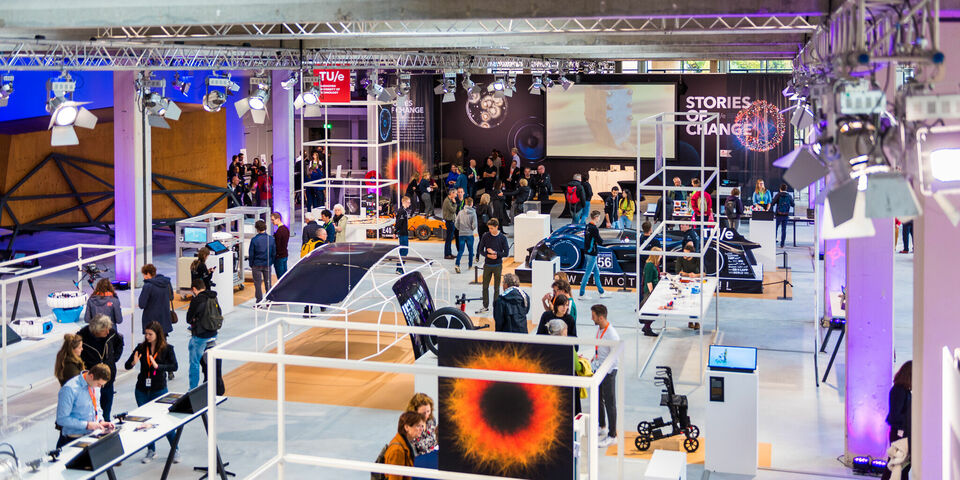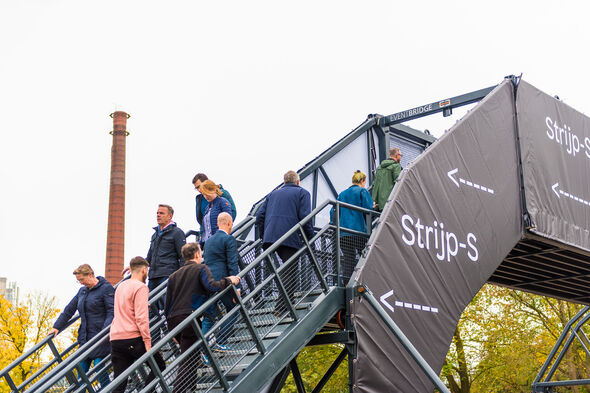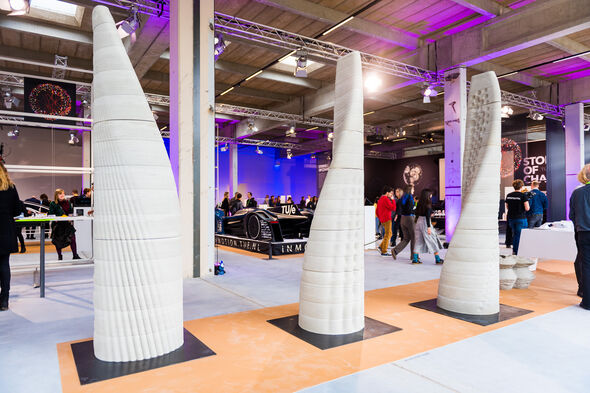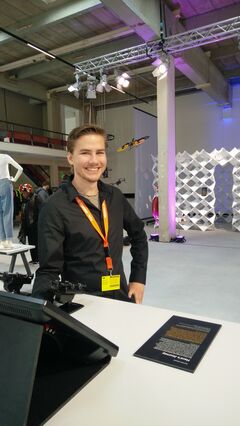DDW on Strijp-T: Enough room for a bed, racing car and conversations
Space and a quiet atmosphere, not the first things that come to mind when you think of the Dutch Design Week. Still, the Drivers of Change expo, where TU/e presents over sixty designs, is surrounded by it. That’s because this year’s exposition is held at the new location on Strijp-T, in building Q6. Visitors have ample opportunity to enter into discussions with researchers. Cursor spoke with, among others, designers of heart valves, racing cars and photonics.
How do you visualize technology at an exposition that attracts visitors who are mainly interested in design? “Technology is often located inside, behind or underneath the design, and isn’t the first eyecatcher at all,” writes project leader Lucas Asselbergs in the exposition’s catalogue.
What does catch one’s eye, however, is the table with plastic heart valves. These polymeric valves are made of materials that the body breaks down and replaces with living cells. The valve is easier to insert than the current mechanical or donor valves, using a stent is, which is made of metal and remains in place.
Directing cells
Hannah Abee, graduate student at Biomedical Engineering, says that the process is still quite complicated nevertheless. “The immune system, which breaks down the polymers, differs from one person to another, and a patient who suffers from kidney failure has a different immune system than a diabetic.” She is trying to find a substance that directs the cells to perform their task at the proper rate. “Not too fast, because the valve will malfunction, which will cause the heart to leak, and not too slow, because that might cause scar tissue.” But today, Abee is present at the DDW, and she enjoys explaining what her group (under supervision of professor Carlijn Bouten) does exactly.
A bit further on you see an extremely large-sized racing car. This is the Vision, a car developed by student team InMotion. “This one will never drive,” team member Jan Jaspar hastens to say, “it’s merely a body.” InMotion, a 50-member team located at the Automotive campus in Helmond, uses the racing sport to develop batteries. “Our goal is to take part in the 24Hours of Le Mans, because a fulltime highspeed race offers us the best circumstance to test our product to the limit. Our battery package distinguishes itself by a special cooling system.” Jaspar expects that the actual car will be presented in the spring of 2020.
A smart bed in the corner of the building invites visitors to lie down on it for a moment. It was placed there by the Institute for Photonic Integration. Most visitors are probably aware that photonics can be used for faster internet and solar cells. But it can also make certain research more cost effective, such as sleep research.
Under the smart bed’s matrass lies a plastic mat with a grid of optical fibers inside, connected to a lighting system. Each juncture is a sensor, because the light pattern changes each time pressure is exerted. This can be seen on a pc, which gives an insight into a patient’s tossing and turning in bed without having to use many expensive pressure sensors.
Networking
Student teams and research groups are present at Drivers of Change, as well as individual participants. Koen van Gaalen presents Hero’s Journey, his graduation project at Industrial Design for which he received his diploma last month. “It’s a smartphone app that helps prevent burnout complaints among students at universities and high schools. Games have a therapeutic effect. This app teaches users how to cope with stress as they play a game.” Van Gaalen decided to wait with sending out his job applications because he expects to meet the right people at this expo. “I’m here to network, and people have indeed showed an interest already.”
Drivers of Change can be visited free of charge. If you want to see other events of the DDW, or buy tickets, click here.





Discussion